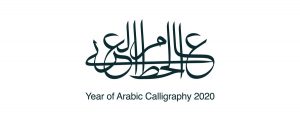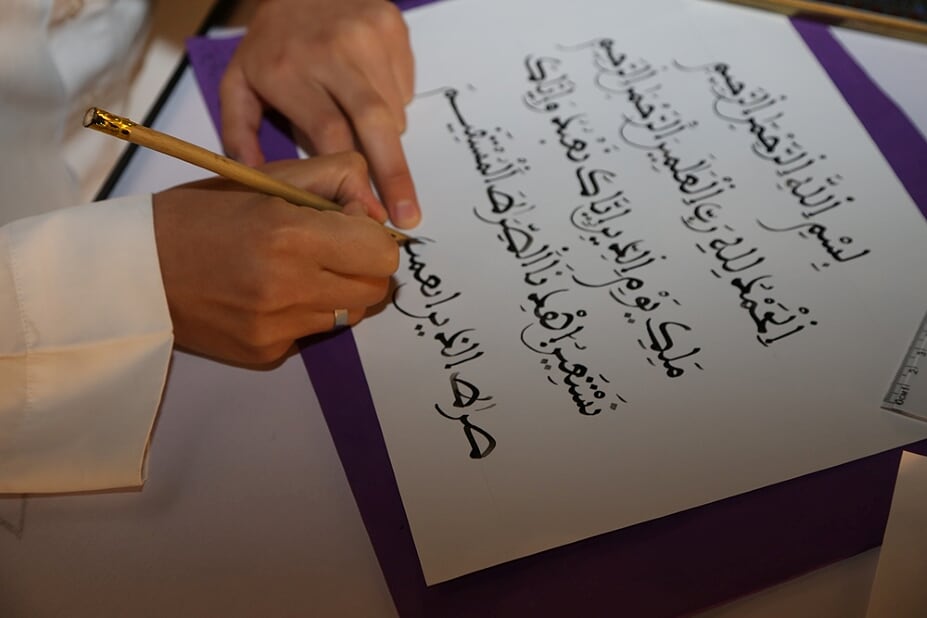
- ARAB NEWS
- 01 Jul 2025

MADINAH: Saudi Arabia’s Ministry of Culture declared 2020 the Year of Arabic Calligraphy and the Madinah-based Dar Al-Qalam Complex has revealed plans to become an international institute granting certificates of competence in Arabic calligraphy.
Ali Al-Mutairi, head of the cultural activity department at the General Directorate of Education in Madinah and supervisor of the Dar Al-Qalam Complex, spoke to Arab News about the institution’s key activities and aims.
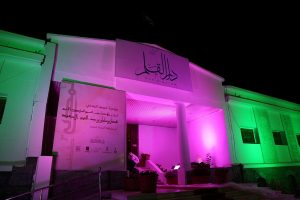
Madinah’s Dar Al-Qalam Complex has become a magnet for culture vultures with its art gallery, educational images and documentation unit, historical theater and Ethar center for scouting and volunteer services. But the undoubted gem of the institution is its renowned calligraphy center.
Supervisor Ali Al-Mutairi said that the director general of education, Nasser Al-Abdulkareem, planned to turn the complex into an international calligraphy center.
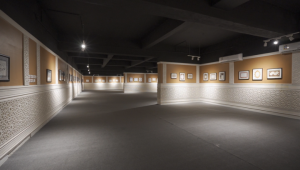
“With the support of Madinah Gov. Prince Faisal bin Salman, we at the education department have plans to develop the Arabic calligraphy center to make it an institute that grants scientific licentiates in Arabic calligraphy. To do this, we are planning to attract top Islamic calligraphers from all over the world,” Al-Mutairi added.
And attracting talent from across the globe should not be too much of a challenge, considering the complex’s history.
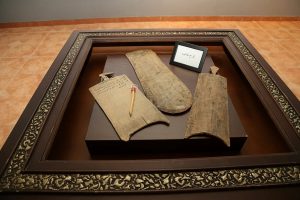
Exploring the Dar Al-Qalam Complex’s storied past
According to Al-Mutairi, the history of the Dar Al-Qalam Complex is closely linked to the Taibah Secondary School, one of the first schools of its kind in Saudi Arabia.
“Taibah school was founded in 1942, and students were later transferred to the Dar Al-Qalam building, which has been serving as the school’s new location since its inauguration by the late King Saud bin Abdul Aziz Al-Saud in 1962,” he told Arab News.
Al-Mutairi pointed out the role played by Prince Faisal and his deputy governor, Prince Saud bin Khalid Al-Faisal, in the development of the complex.
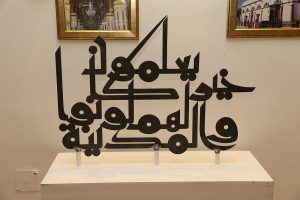
“Prince Faisal inaugurated the complex in its current style in 2013 at a ceremony attended by the former minister of education at the time, Prince Faisal bin Abdullah Al-Saud.
“Since then, the Ministry of Education, represented by the General Directorate of Education in Madinah, has attached great importance, care and support to the complex, turning it into a beacon for science and education in the Madinah region,” he said.
Raising awareness about Madani calligraphy
Authorities in the region have also declared a special focus on local culture and art, with the Madinah Development Authority launching an initiative in August 2015 to preserve the homegrown Madani form of calligraphy.
Well-known calligrapher and supervisor of the Arabic calligraphy committee at the Madinah branch of the Saudi Arabian Society for Culture and Arts (SASCA), Bandar Al-Amri, said: “Historically, the Madani script is an extension of the Makki form of writing, which the Quraish tribe first used in Makkah.
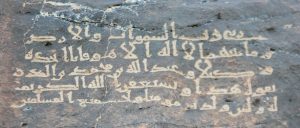
“Nowadays, there are copies of the Holy Qur’an that were written in the Madani style. These copies are kept in many libraries and museums, such as the national library of France, in Paris, and the Berlin library.
“The Madinah region is rich in early Islamic inscriptions engraved on the rocks of its mountains and water stream banks. The inscriptions were found along the caravan ways that used to go through the city. What distinguishes these from other inscriptions is that most of them are for the people of Madinah or those who have settled here,” Al-Amri added.
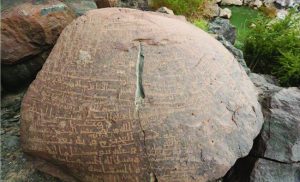
“These inscriptions are not limited to men, there are also inscriptions for women. Some of them include Qur’anic verses, prayers, notes, poems and news inscriptions, and those engraved in Madani fonts are found on the rocks of the valleys of the Madinah area.”
Training a new generation
One of the complex’s primary aims is to train a new generation of calligraphers in a bid to keep the art form alive and engage with talented calligraphers.
Head of the male student activity department at Madinah’s General Directorate of Education, Abdullah Al-Zahrani, told Arab News that the aim was “to introduce the beauty of Arabic calligraphy to our teachers and students of both genders.”
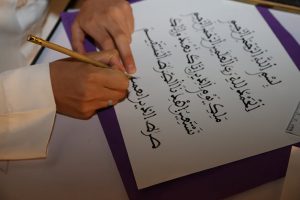
His counterpart in the female student activity department, Layla Al-Amri, said: “The specialized calligraphers, their workshops and fully equipped training halls, all help our female students improve their hand lettering.”
Bassam Al-Sa’idy, an eighth-grade student, said calligraphy works at his school had caught his eye from when he first learned to read.
“The handwriting of the Qur’an by Uthman Taha (Syrian calligrapher) also attracted my attention. I was determined to learn Arabic calligraphy.
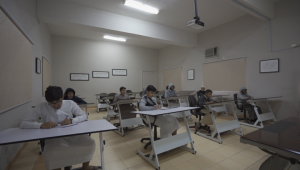
“My school organized a handwriting training course and I joined that course, after which we received an invitation to visit the Dar Al-Qalam Complex. They welcomed us, and me and my colleagues began to learn Ruq’ah script and the Nuskh scripts,” added Al-Sa’idy.
“So far, I have nearly mastered the scripts of Ruq’ah and Nuskh, and I will soon begin studying the Ottoman script so that I can make my dream of becoming a Qur’an calligrapher come true.”
Calligrapher Adel Barri said that various copybooks of renowned calligraphers for different scripts were used as part of the center’s curriculum.
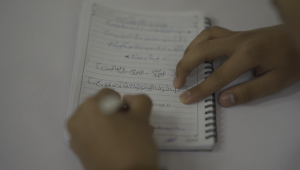
“We use the copybooks of the prominent Iraqi calligrapher Mohammed Ezzat in teaching the Diwani script. We also use the copybooks of the Turkish calligrapher Mehmed Shevki Efendi to teach Nuskh and Thuluth scripts. These two names are references in their field,” Barri added.
“We are here ready to provide them (the center’s students) with everything they need for free. Our main goal is to make them acquire the skills of this art.”
